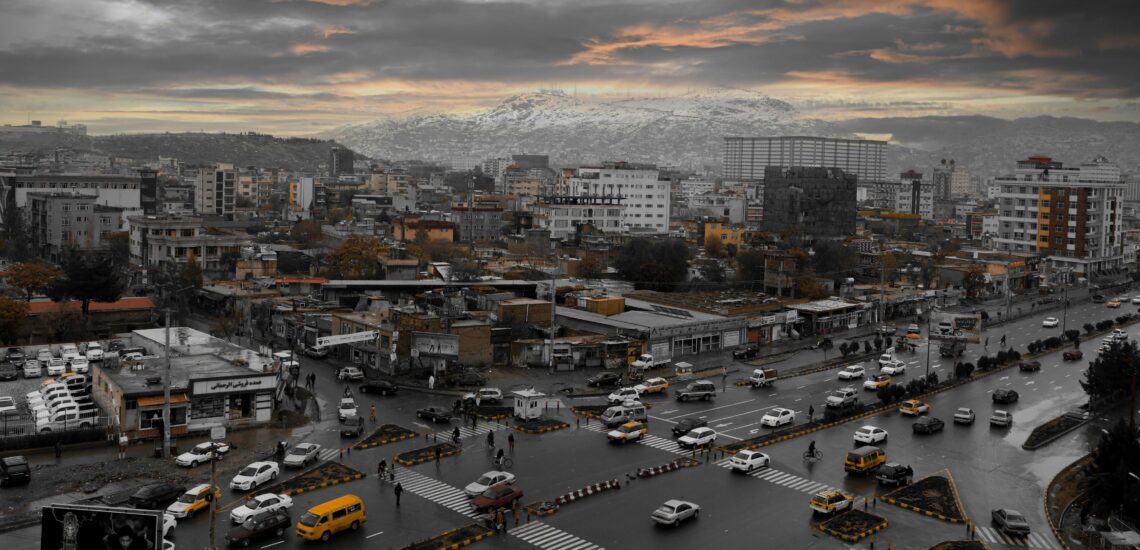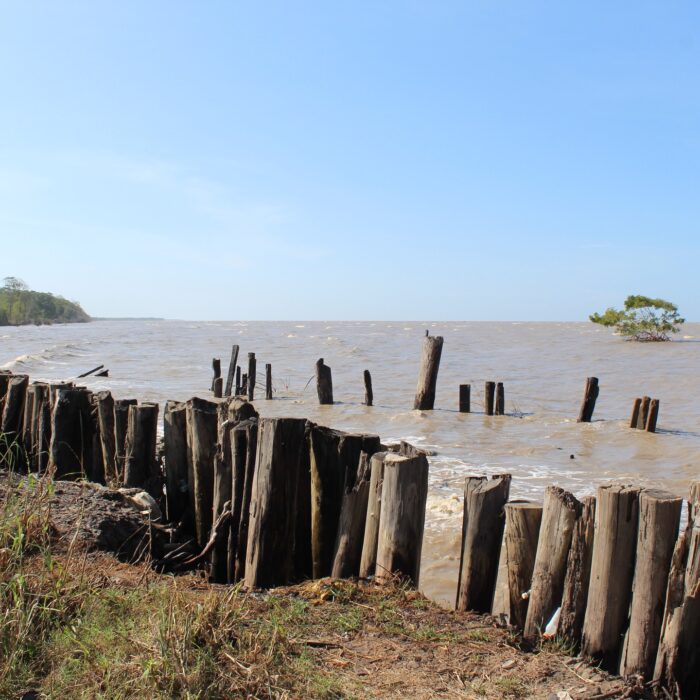Few countries are as historically rich and geopolitically complex as Afghanistan. Situated at the heart of Central and South Asia, it has long been a meeting point of ancient trade routes, empires, and religious traditions – from Zoroastrian fire temples and Buddhist stupas to Islamic dynasties and colonial campaigns. Despite the challenges of recent decades, the country remains home to dramatic landscapes, diverse cultures, and architectural remnants of its layered past.
However, travel to Afghanistan today comes with significant security risks. Most governments advise against non-essential travel due to ongoing instability. Those who do choose to visit must plan carefully, travel with reputable local contacts, and remain highly aware of regional conditions. When approached responsibly, with cultural sensitivity and local support, a visit to Afghanistan can offer rare insights into resilience, hospitality, and a history that continues to shape the region.
Best Cities and Towns to Visit
Kabul
Set in a wide mountain valley, Kabul is Afghanistan’s complex and resilient capital – a place where ancient history, modern challenges, and everyday life collide. Though much of the city has been shaped by conflict, it remains a cultural and historical hub, offering glimpses into Afghanistan’s past and present for those able to visit with local guidance.
Highlights include the peaceful Babur Gardens, restored in traditional Mughal style and offering a rare green escape; the National Museum of Afghanistan, once looted but now partially restored with exhibits of Buddhist, Islamic, and pre-Islamic artifacts; and the Shah-Do Shamshira Mosque, an unusual yellow structure built in a Baroque Revival style more common to Europe than Central Asia. The Old City, especially the Murad Khani quarter, showcases traditional Afghan architecture and local restoration efforts.
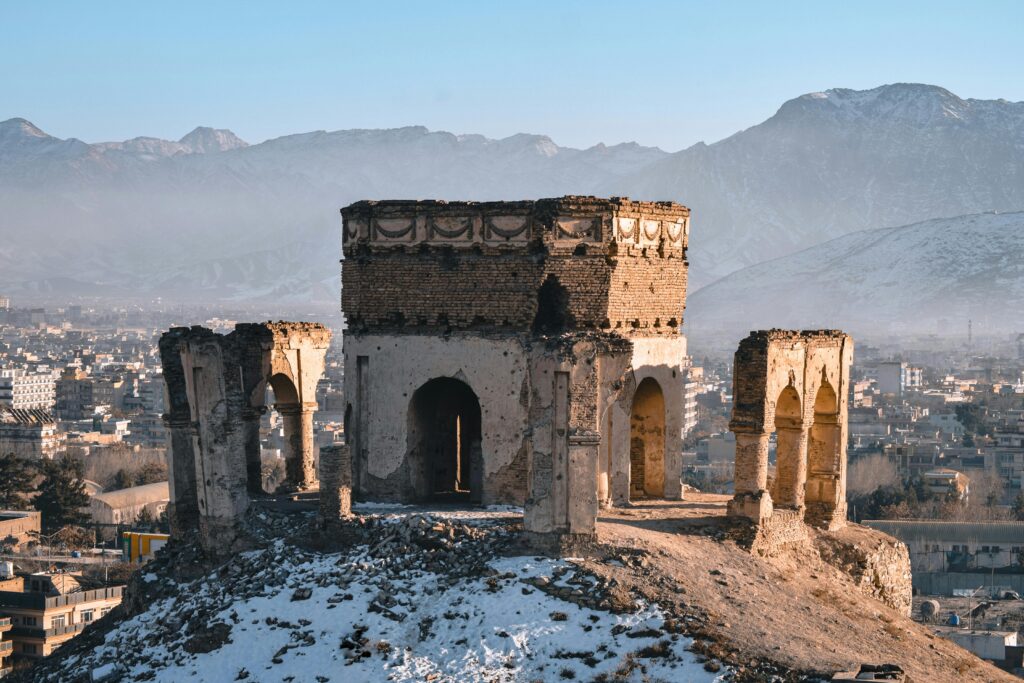
Herat
Located near the Iranian border, Herat is one of Afghanistan’s oldest cities and a major center of Persian-influenced art, architecture, and trade. It’s relatively more stable than other parts of the country and has historically welcomed overland travelers coming from Iran. The local language is Dari (Afghan Persian), and the city has a visibly different cultural atmosphere compared to Kabul or the east.
The main attraction is the Friday Mosque (Masjid-i Jami) – a masterpiece of Islamic architecture with extensive blue tilework and active religious life. Also worth visiting is the Herat Citadel, originally built by Alexander the Great and rebuilt by the Timurids, now open as a small museum. In the central bazaars, travelers can shop for handmade carpets, ceramics, and locally grown saffron, for which Herat is famous.
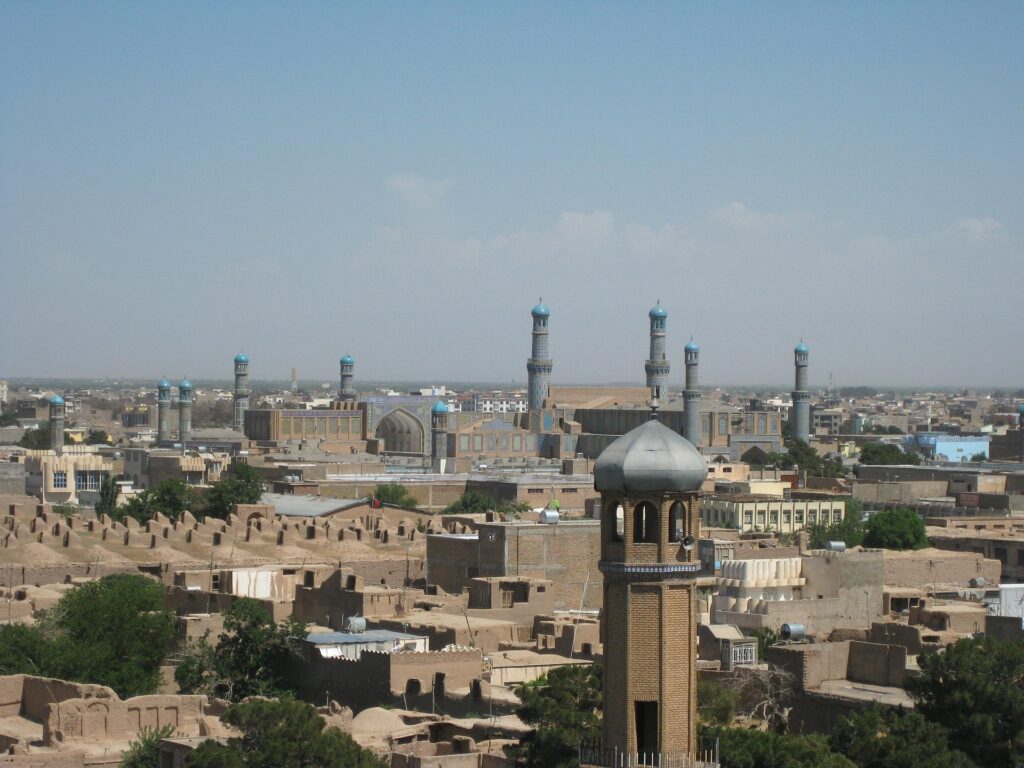
Mazar-i-Sharif
Located in northern Afghanistan near the border with Uzbekistan, Mazar-i-Sharif is known for being one of the country’s safest and most welcoming cities, especially for visitors entering overland. It’s a major religious and cultural center, with wide streets, relatively good infrastructure, and a more relaxed atmosphere than Kabul or Kandahar.
The city’s heart is the Blue Mosque (Shrine of Hazrat Ali) – a stunning example of Islamic architecture covered in shimmering turquoise and cobalt tiles. It’s both a religious site and a lively social hub, especially during Nowruz (Persian New Year), when the city fills with thousands of pilgrims. The square around the mosque is ideal for people-watching, street food, and observing local customs in a peaceful setting.
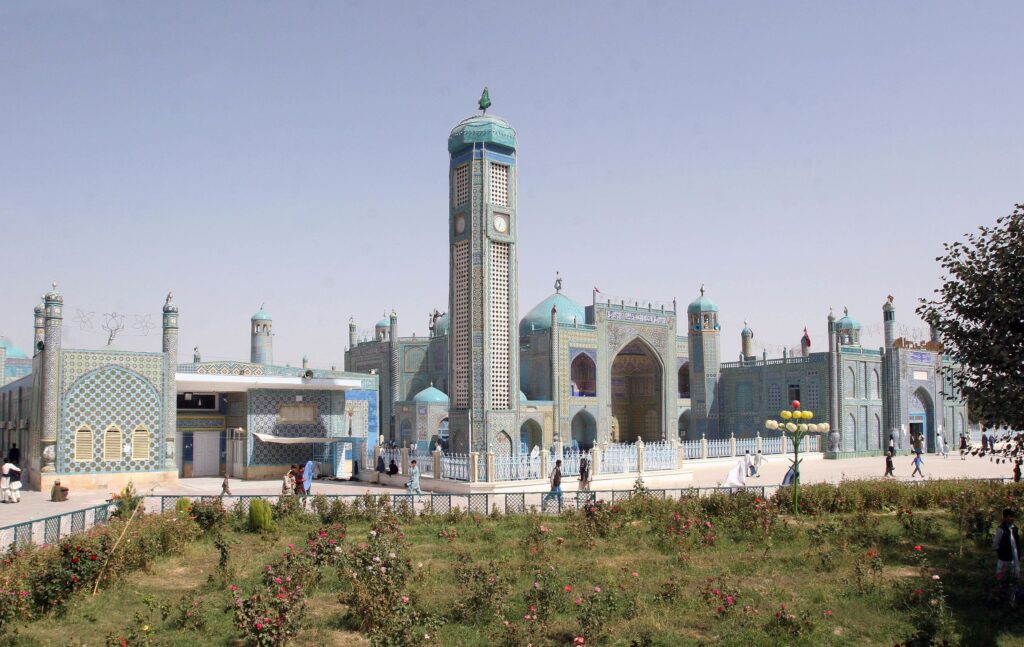
Bamiyan
Bamiyan is known for its natural beauty, cultural heritage, and relative peace compared to other regions. Once a major stop on the Silk Road, it was home to the famous giant Buddha statues, carved into sandstone cliffs in the 6th century and tragically destroyed in 2001. Today, their empty niches still draw visitors and carry powerful historical and spiritual meaning.
The surrounding Hazarajat region is predominantly Hazara, known for its welcoming communities, cool summer climate, and expansive mountain valleys. The area is excellent for trekking, horseback riding, and exploring caves, hilltop fortresses, and quiet villages. Bamiyan is also the gateway to Band-e Amir National Park, Afghanistan’s only national park, famous for its chain of deep blue lakes separated by natural travertine dams.
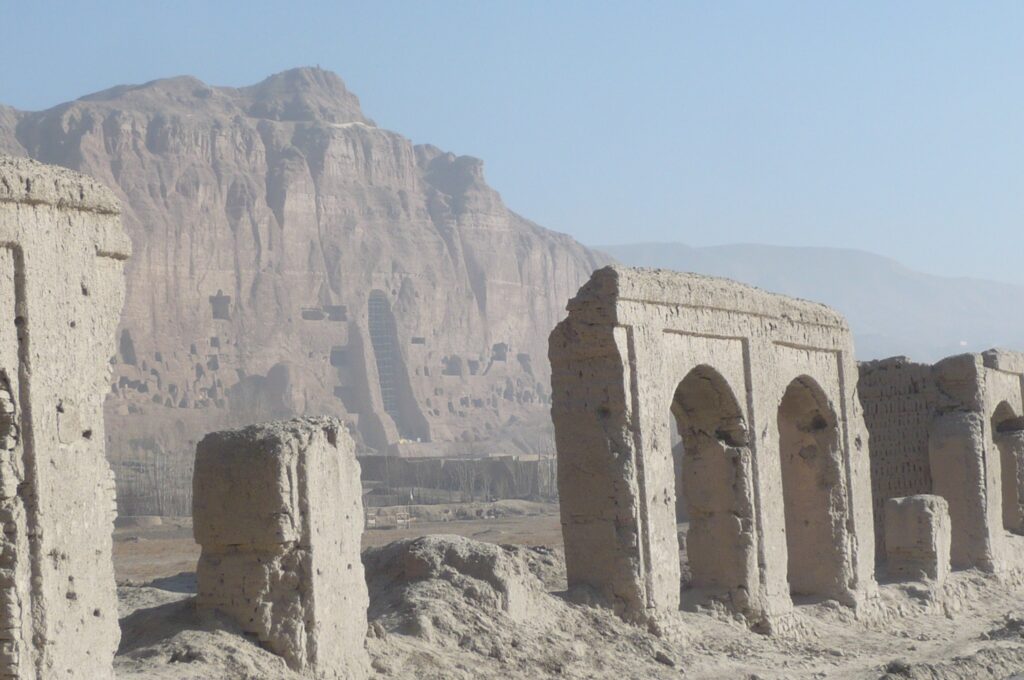
Kandahar
Kandahar was founded in the 18th century by Ahmad Shah Durrani, the father of modern Afghanistan. It served as the country’s original capital and remains a stronghold of Pashtun culture and traditional Afghan identity. While security conditions can be sensitive, the city holds deep national importance and features several key historical sites.
Notable landmarks include the Kandahar Citadel, believed to have been built on foundations dating back to Alexander the Great, and the Shrine of the Sacred Cloak, which houses what many believe to be a cloak worn by the Prophet Muhammad – an important religious site rarely open to non-Muslim visitors. The city’s bazaars are vibrant and traditional, offering textiles, spices, and local craftsmanship.
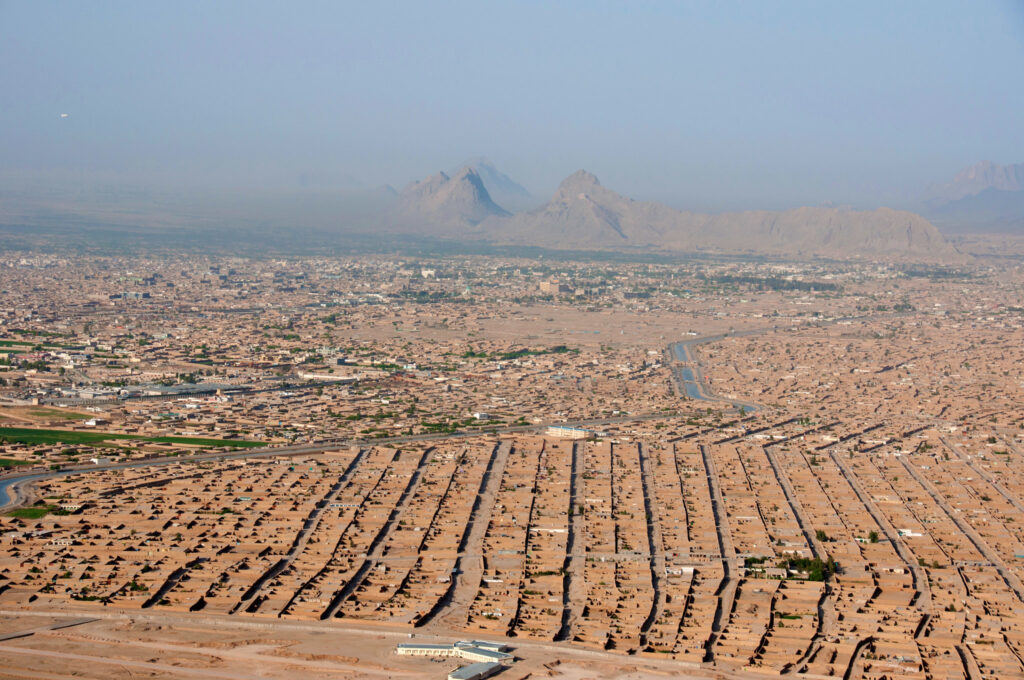
Ghazni
Ghazni was once the capital of the Ghaznavid Empire (10th–12th centuries), one of the most powerful Islamic dynasties in the region. Though much of the city lies in partial ruin, its remaining minarets, tombs, and walls offer powerful reminders of a time when Ghazni was a major center of Islamic art, science, and literature.
Key sights include the 12th-century minarets, now standing isolated on the plains outside the city, as well as the tombs of Mahmud of Ghazni and other rulers. The area also contains remnants of fortified walls and Islamic-era urban planning, though many sites have suffered from neglect and conflict. Ghazni’s position as a historical crossroads makes it culturally rich but logistically and politically complex.
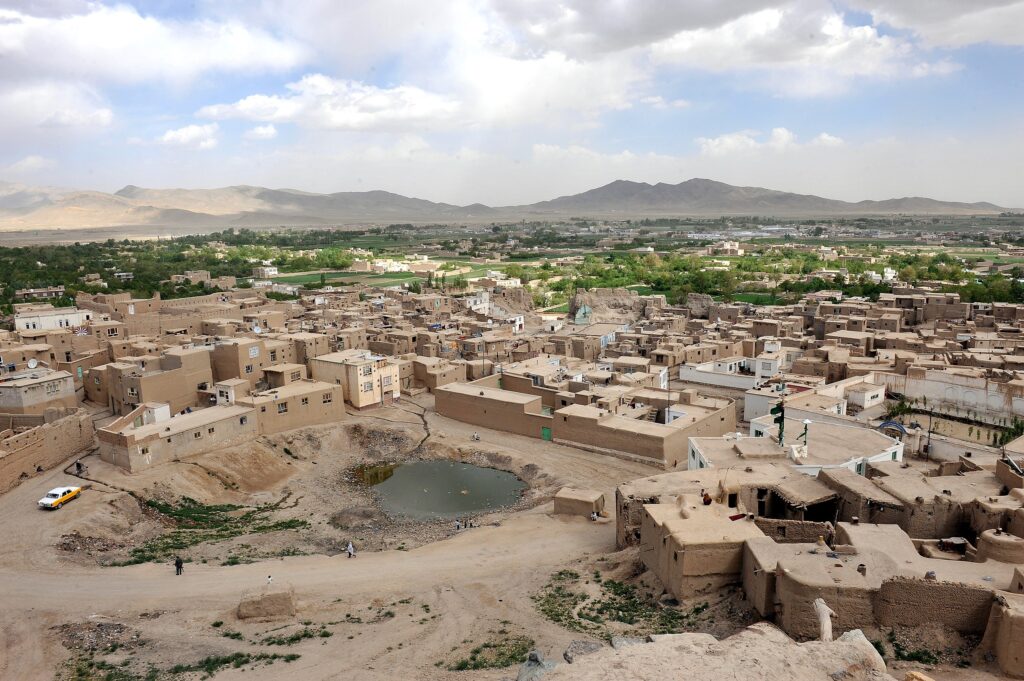
Best Natural Wonders
Band-e Amir National Park
Located about 75 km west of Bamiyan, Band-e Amir is Afghanistan’s first national park and one of its most spectacular natural areas. The park features six deep blue lakes, each separated by natural travertine dams formed by mineral-rich spring water. Set against the backdrop of the Hindu Kush mountains, the lakes are strikingly clear, intensely colored, and surrounded by stark limestone cliffs.
Popular activities include hiking between the lakes, picnicking, and photography, especially during the dry summer season (June–September) when the skies are clear and the trails are accessible. The park is reached by rough road from Bamiyan, and basic accommodation is available in local villages or tented camps nearby. A small shrine near Band-e Haibat draws local pilgrims, adding a spiritual element to the landscape.
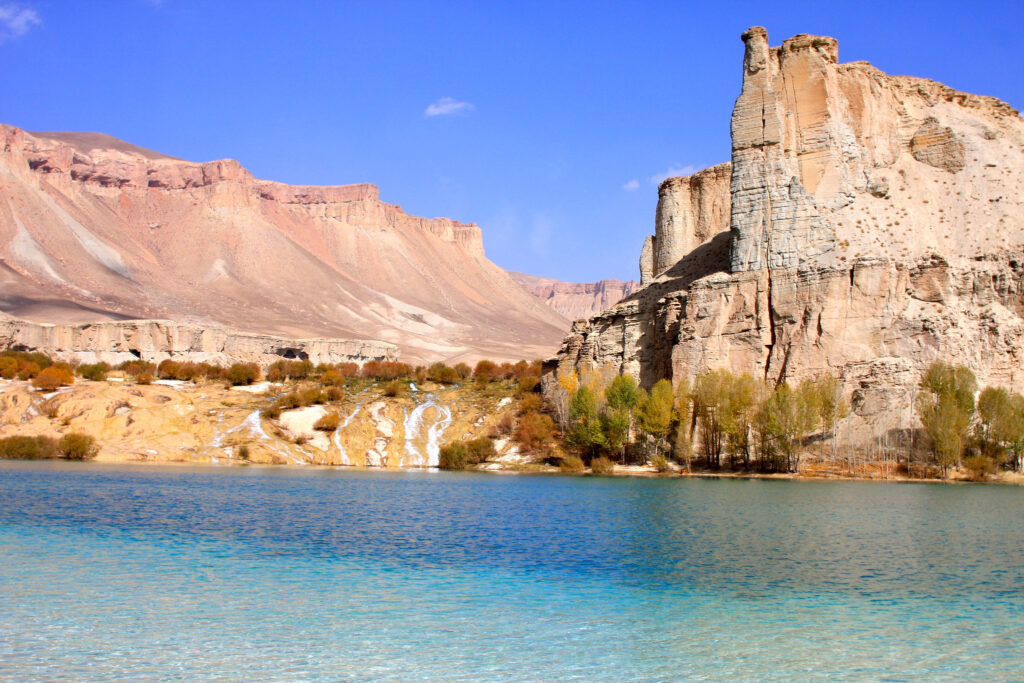
Panjshir Valley
The Panjshir Valley is one of Afghanistan’s most scenic and historically symbolic regions. A narrow river valley cuts through the Hindu Kush, lined with green fields, stone villages, and snowcapped peaks that rise dramatically on either side. It’s a place of natural beauty but also strong cultural identity, especially among ethnic Tajiks.
Panjshir holds deep significance in modern Afghan history. It was a center of resistance during both the Soviet occupation and the Taliban era, and the final resting place of Ahmad Shah Massoud, a revered commander known as the “Lion of Panjshir.” Visitors can see Massoud’s mausoleum, now a national symbol, as well as traditional villages and small farms that reflect the region’s self-sufficient way of life.
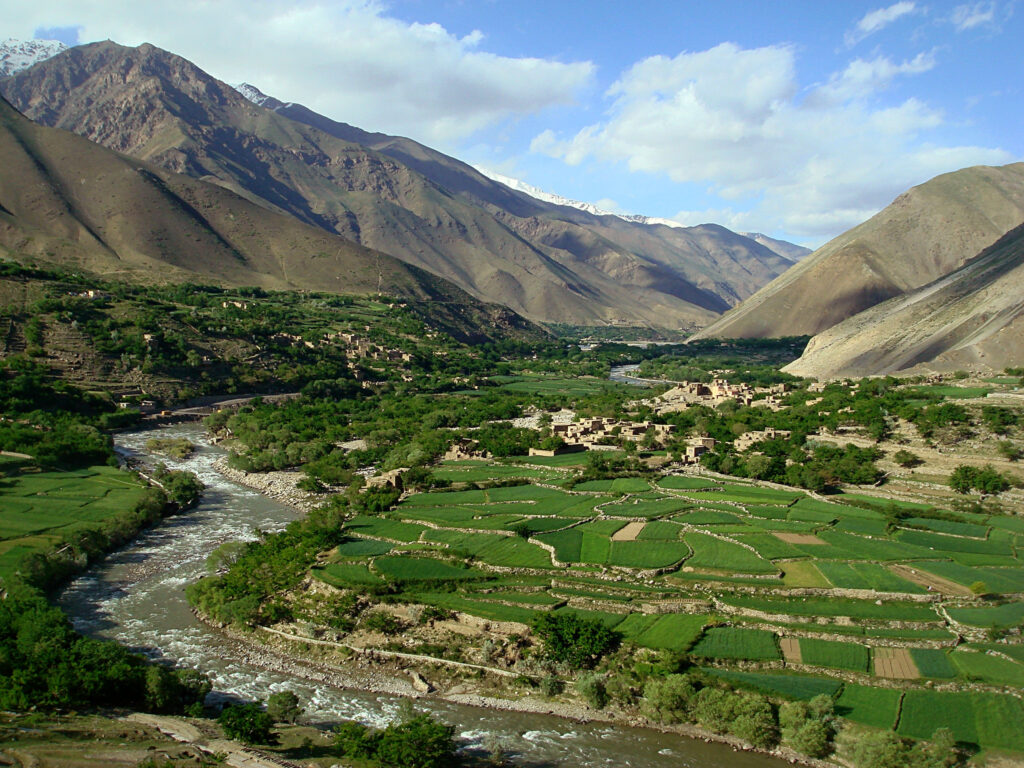
Wakhan Corridor
Stretching between Tajikistan, Pakistan, and China, the Wakhan Corridor is a narrow, mountainous strip of land in northeastern Afghanistan – one of the most remote and least developed regions in Central Asia. Few roads reach this area, and there’s virtually no modern infrastructure. What you’ll find instead is raw alpine wilderness, traditional Wakhi and Kyrgyz nomadic communities, and some of the most isolated trekking routes on Earth.
Travel here means crossing high-altitude passes, staying in yurts or stone homes, and moving at the pace of village life. The landscape is dominated by the Pamir and Hindu Kush ranges, with wild yaks grazing in open pastures and snow-capped peaks in every direction. Access is typically via Ishkashim, and visitors must arrange special permits, guides, and reliable local logistics well in advance.
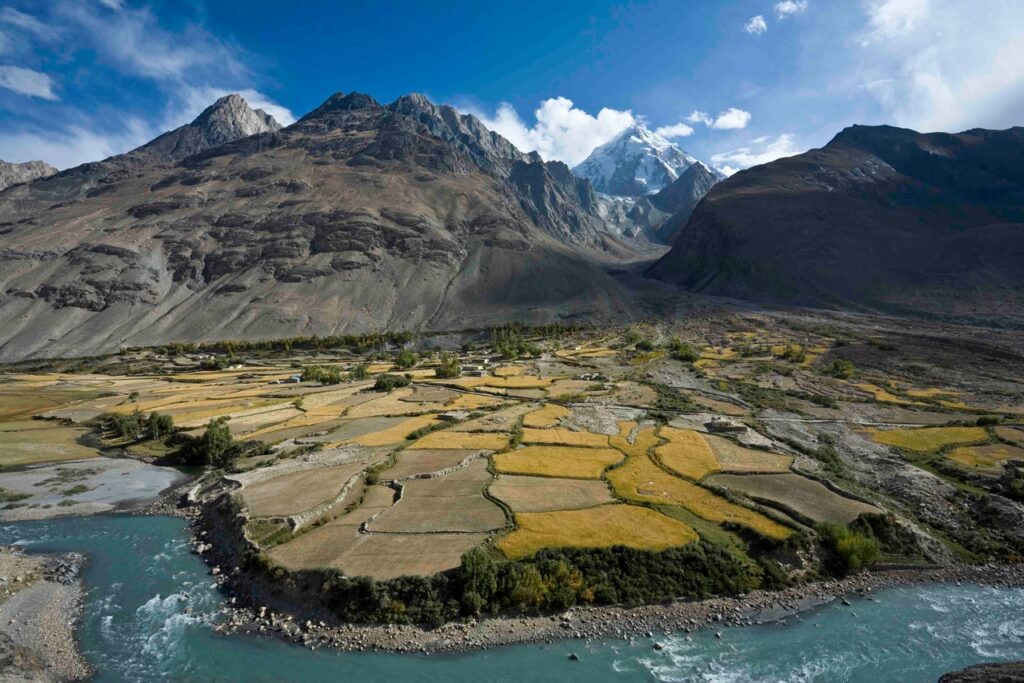
Nuristan
Nuristan is one of Afghanistan’s most isolated and culturally distinct regions. The area is heavily forested and mountainous, with steep valleys, alpine rivers, and traditional wooden villages that feel more Himalayan than Central Asian. Until the late 19th century, Nuristanis followed pre-Islamic belief systems, and traces of that heritage still shape the region’s customs, languages, and architecture.
Due to its isolation, Nuristan has preserved unique dialects, distinctive wood-carved homes, and a strong sense of local identity. The region is sparsely populated and lacks infrastructure, but for anthropologists, linguists, or experienced trekkers with the right local connections, it offers a rare look at Afghanistan’s pre-modern cultural layers.
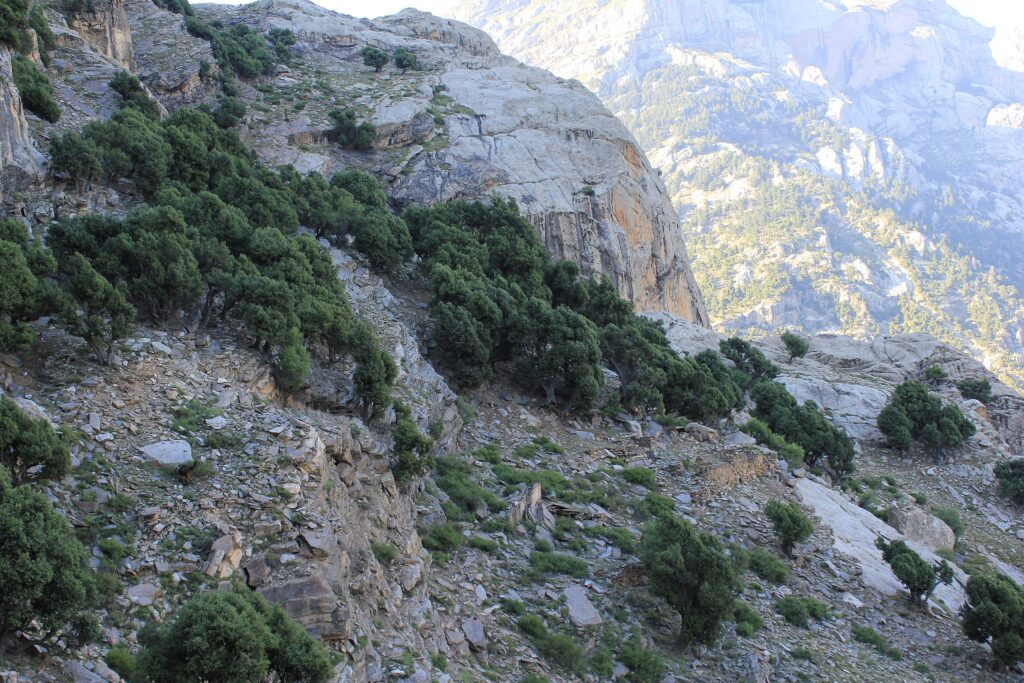
Salang Pass
The Salang Pass is one of Afghanistan’s most important and dramatic mountain crossings, connecting Kabul and the north via the Hindu Kush. Sitting at over 3,800 meters, it offers sweeping views of jagged peaks and steep valleys. The key feature is the Salang Tunnel, a 2.7 km passage built by the Soviets in the 1960s – a critical engineering feat that transformed year-round transportation across the mountains.
While the route is vital for trade and travel, it’s also notoriously hazardous in winter, when heavy snow and avalanches can block access or make conditions dangerous. In summer, however, the pass becomes one of the most scenic drives in the country, especially for those traveling between Kabul, Baghlan, or Mazar-i-Sharif.
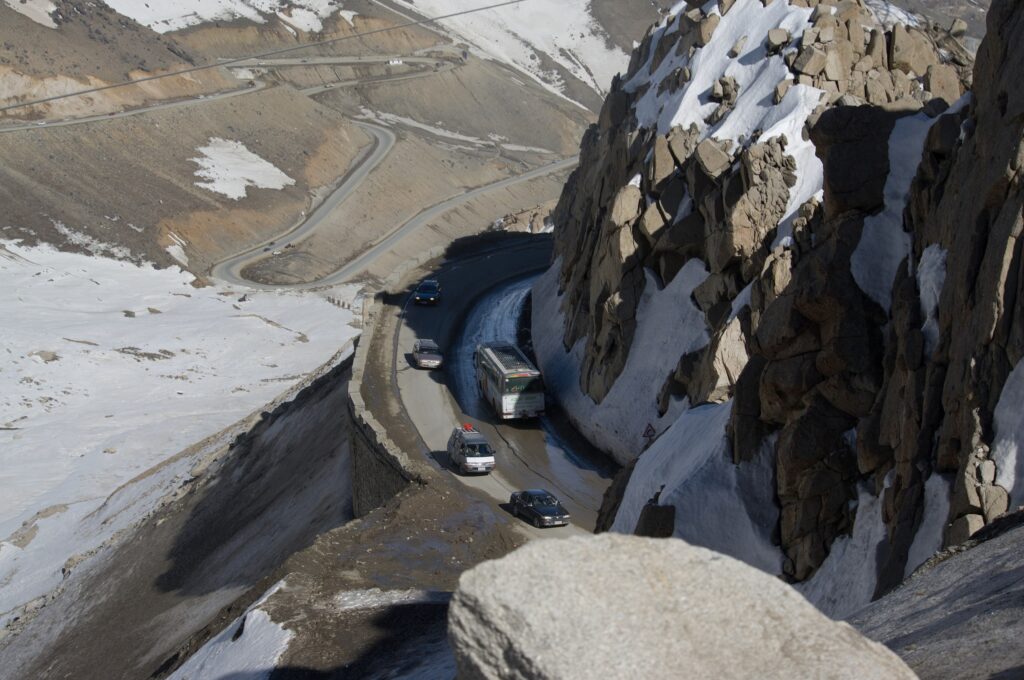
Hidden Gems of Afghanistan
Minaret of Jam
Hidden deep in Ghor Province, the Minaret of Jam is one of Afghanistan’s most remarkable and least accessible monuments. Built in the 12th century by the Ghurid Empire, it rises 65 meters and is entirely covered in intricate Kufic calligraphy, geometric patterns, and verses from the Qur’an. Surrounded by steep cliffs and a winding river, it stands alone – a UNESCO World Heritage Site in the middle of rugged, unspoiled terrain.
Reaching Jam is a challenge. The road is long, rough, and remote, often requiring several hours of off-road driving and a reliable local guide. There are no facilities nearby, so visitors must be fully self-sufficient or travel with a support team. That said, for those who make the journey, the minaret offers a breathtaking glimpse into Afghanistan’s medieval architectural legacy – with almost no one else around.
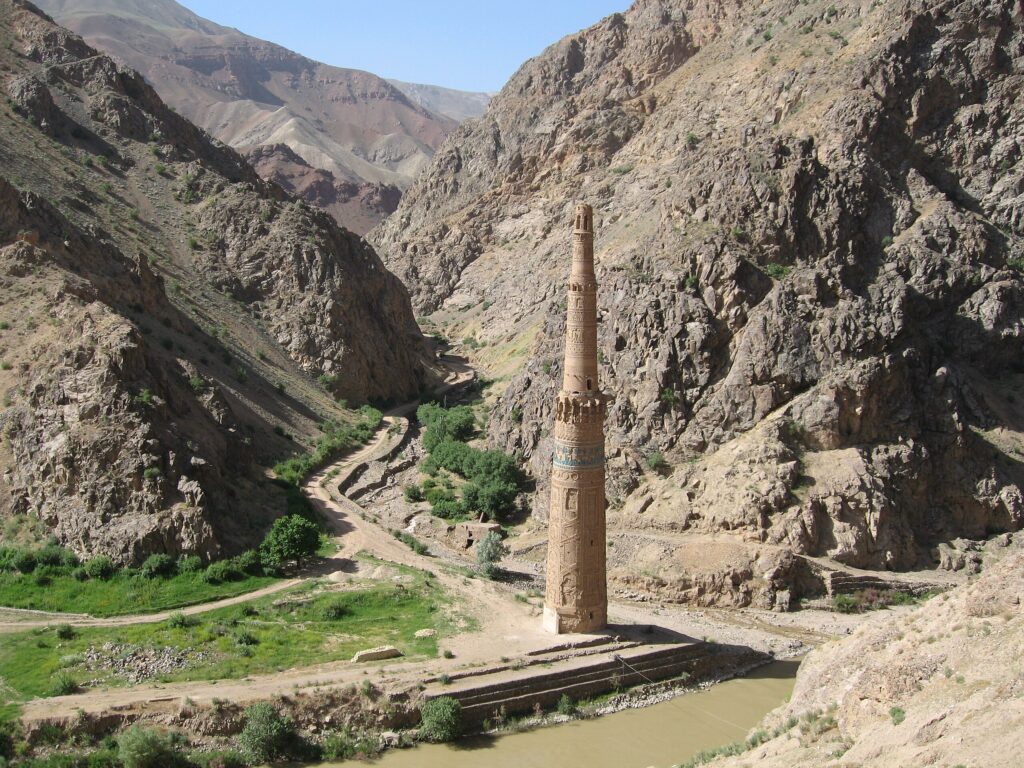
Chak Wardak Stupa
Located about 50 km southwest of Kabul, the Chak Wardak Stupa is one of the few visible remains of Afghanistan’s Buddhist era, which flourished before the arrival of Islam in the 8th century. The site includes a large domed stupa surrounded by smaller ruins and caves, likely used for meditation or storage of religious relics.
Though partially eroded and lacking signage or protection, the site offers a rare opportunity to connect with the region’s Gandharan heritage, when Afghanistan was a crossroads of Buddhist and Hellenistic influence. The area is rural and quiet, and visits require a local guide familiar with the region and current security conditions.
Istalif Village
Just an hour north of Kabul in the Shomali Plains, Istalif is a small village known for its traditional pottery, fruit orchards, and mountain views. Once a retreat for Afghan royals, it’s now a peaceful escape from city life, popular with locals for weekend picnics and family outings. The setting is green and calm, especially in spring and early summer when the apricot and mulberry trees are in bloom.
Istalif’s main street is lined with ceramic workshops where artisans produce the region’s famous blue-glazed pottery – ideal for souvenirs or observing age-old techniques. Local stalls also sell dried fruits, nuts, and handicrafts. While facilities are basic, the village offers a glimpse into Afghanistan’s rural life and creative traditions, with relatively easy access from the capital.
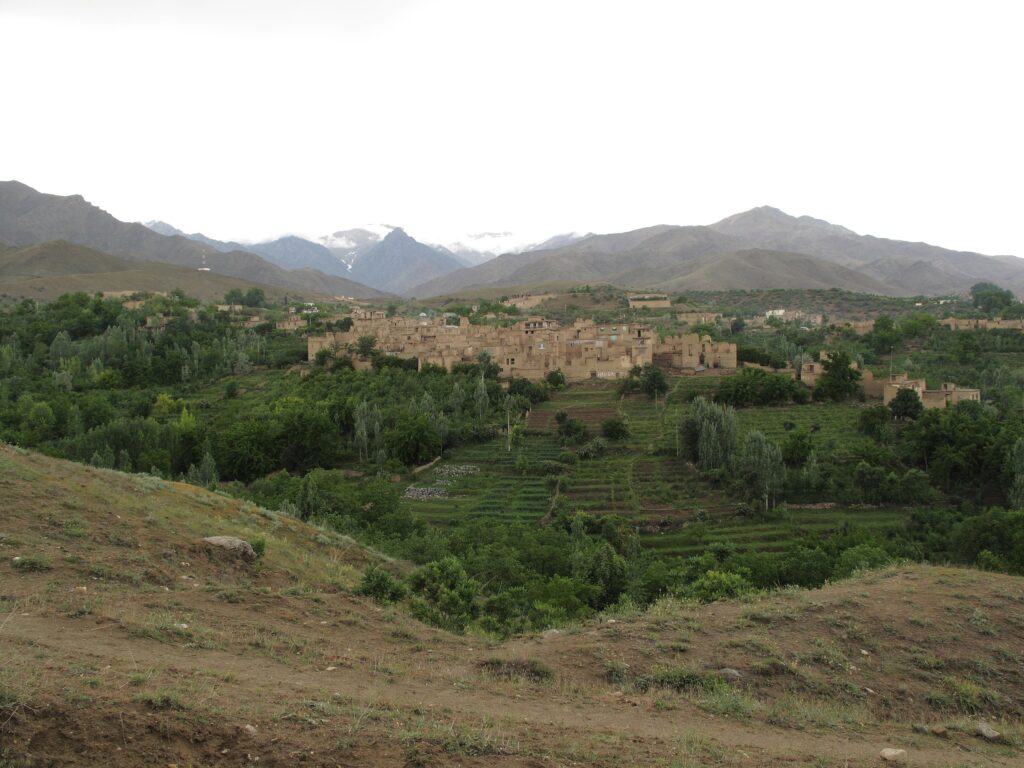
Paghman Gardens
Located just west of Kabul, the Paghman Gardens were originally built in the early 20th century as a royal retreat, offering cooler air, tree-lined avenues, and views of the surrounding mountains. Designed with European influences, the area once featured grand pavilions and landscaped promenades, serving as a summer escape for Afghan elites.
Although heavily damaged during decades of conflict, restoration efforts have revived parts of the gardens, and today they remain a popular spot for locals to relax, picnic, and enjoy the outdoors. On weekends and holidays, families come here for shade, scenery, and a break from the city’s pace.
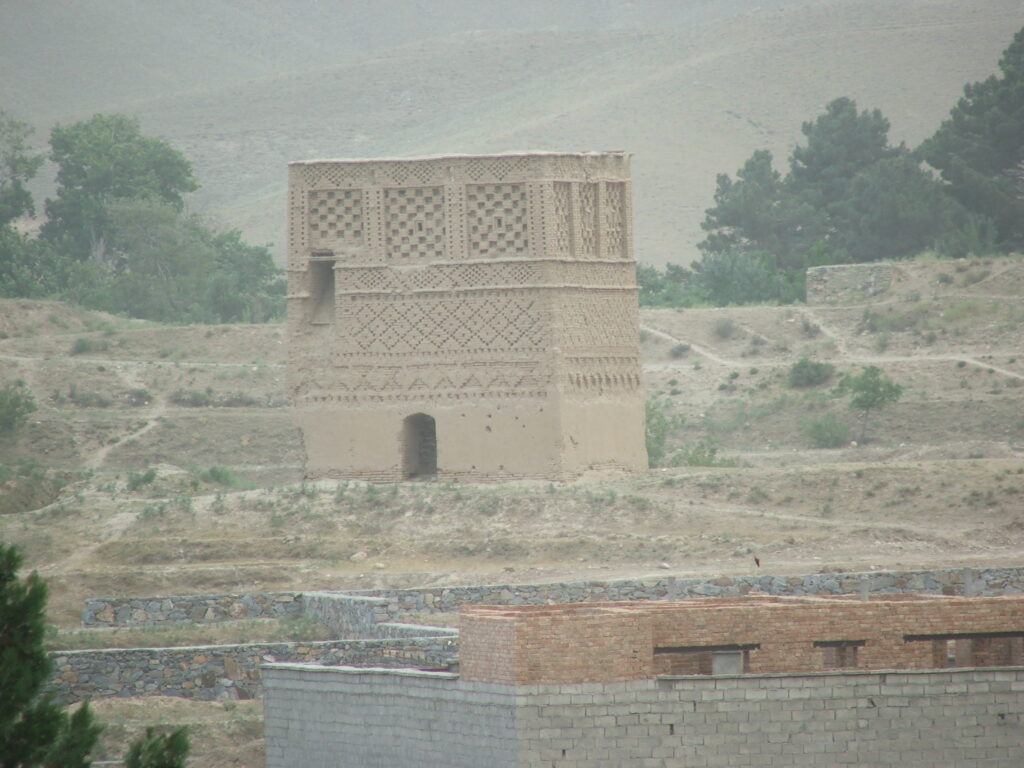
Takht-e Rustam
Located just outside Samangan, Takht-e Rustam is one of Afghanistan’s best-preserved pre-Islamic archaeological sites. Dating back to around the 4th–5th century CE, this Buddhist monastery complex is entirely carved into a sandstone cliff. Its central feature is a stupa cut from solid rock, shaped in the round and surrounded by a ringed path for ritual circumambulation — all sculpted directly into the earth.
Surrounding the stupa are small caves and chambers, likely used as meditation cells or living quarters for monks. The absence of surface decoration contrasts with the elegant simplicity of the site’s architecture, making it an important example of early Buddhist cave-monastery design in Central Asia.
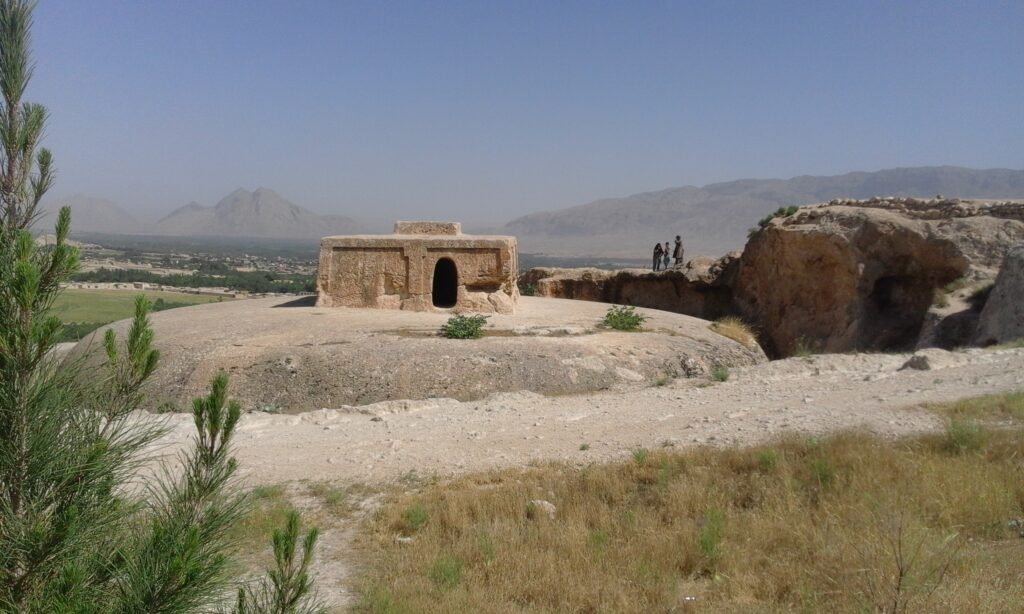
Best Cultural & Historical Landmarks
Blue Mosque (Mazar-i-Sharif)
At the heart of Mazar-i-Sharif, the Blue Mosque – also known as the Shrine of Hazrat Ali is one of Afghanistan’s most iconic religious landmarks. Covered in vivid blue and turquoise tiles, the mosque is a masterpiece of Timurid-style architecture, with intricate floral patterns and soaring domes that shimmer in the sunlight. The site is especially lively during Nowruz, when thousands of pilgrims gather for celebrations.
Local legend holds that the shrine is the final resting place of Ali ibn Abi Talib, cousin and son-in-law of the Prophet Muhammad, though most historians believe Ali is buried in Najaf, Iraq. Regardless of the historical debate, the site is deeply revered and functions as a major spiritual and social gathering point in northern Afghanistan.
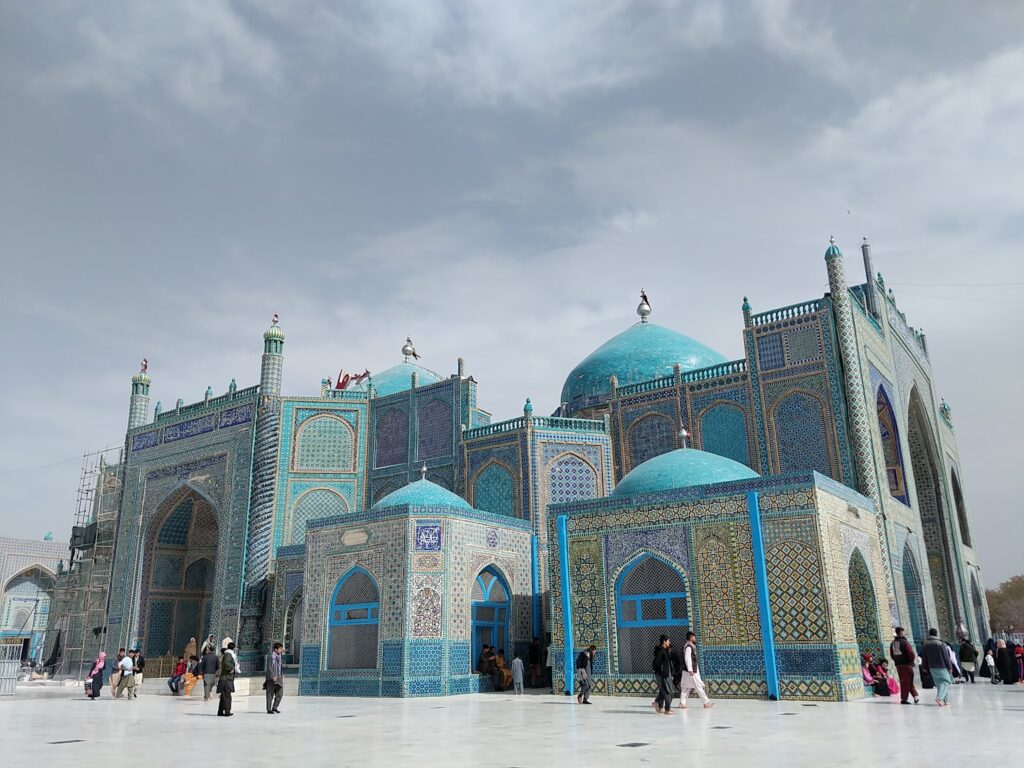
Friday Mosque of Herat
Originally built in the 12th century and expanded under the Timurid dynasty, the mosque features stunning blue and turquoise tilework, geometric patterns, and intricate calligraphy – a showcase of centuries of Islamic craftsmanship. It remains a prime example of Persian-influenced religious architecture in Central Asia.
The mosque is still an active place of worship, but respectful visitors are welcome outside of prayer times. Modest clothing and quiet behavior are expected, and photography is generally permitted in the outer courtyards. Restoration work continues to preserve its richly decorated facades and domes.
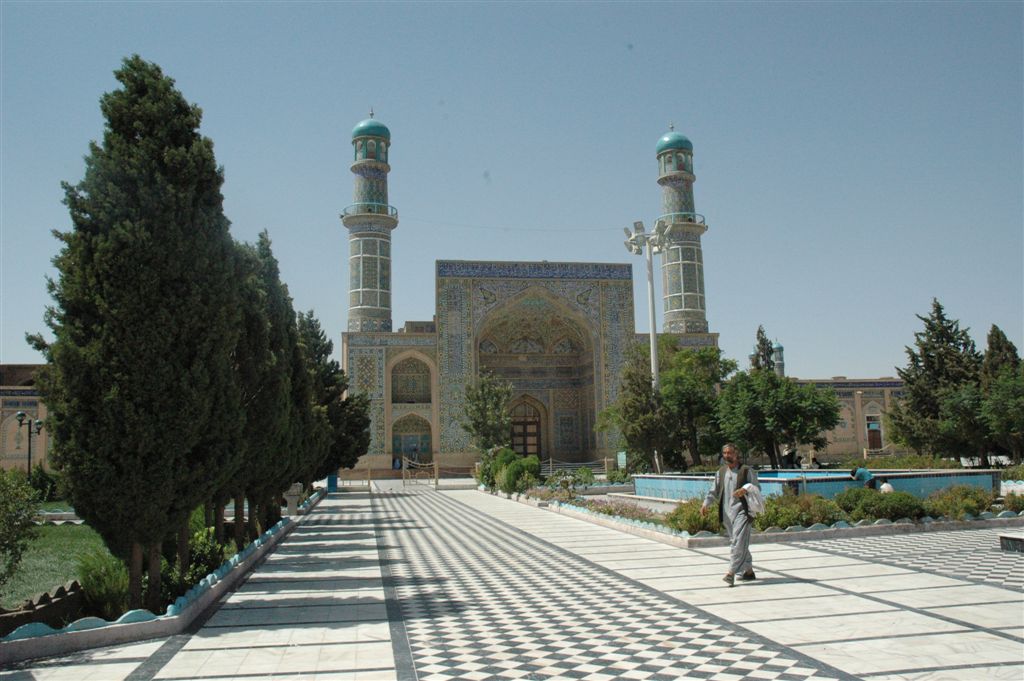
Citadel of Herat
The Citadel of Herat (Qala Ikhtiyaruddin) stands at the center of the city’s old quarter, with roots tracing back to Alexander the Great, who is believed to have laid its original foundations. The current structure was expanded in the 14th century by Timur, making it one of the oldest and most historically layered fortresses in Afghanistan.
Visitors can climb the restored ramparts for panoramic views over Herat’s rooftops and surrounding mountains. Inside the fortress is a small but well-curated museum featuring exhibits on Herat’s military, cultural, and architectural history. The site is clean, walkable, and one of the few major heritage landmarks in Afghanistan open to the public.
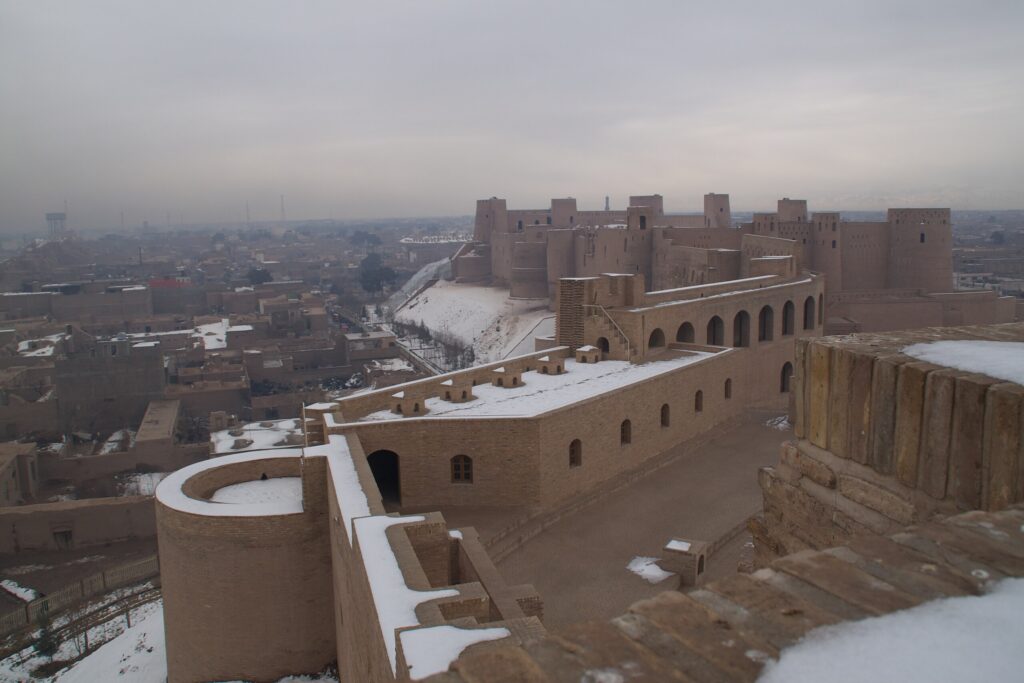
Buddhas of Bamiyan (Site)
Set within towering sandstone cliffs in the Bamiyan Valley, the empty niches of the Buddhas of Bamiyan remain a powerful symbol of Afghanistan’s Buddhist heritage and cultural loss. The two statues, once standing 38 and 55 meters tall, were carved in the 6th century and destroyed by the Taliban in 2001. Despite their absence, the scale and setting still leave a deep impression on visitors.
Surrounding the niches are hundreds of caves, once used by Buddhist monks for meditation and study. Many feature faded murals, niches, and carvings, some of which date back over 1,500 years. A small on-site museum and interpretive signs provide historical context, and guided visits are available through local guesthouses.
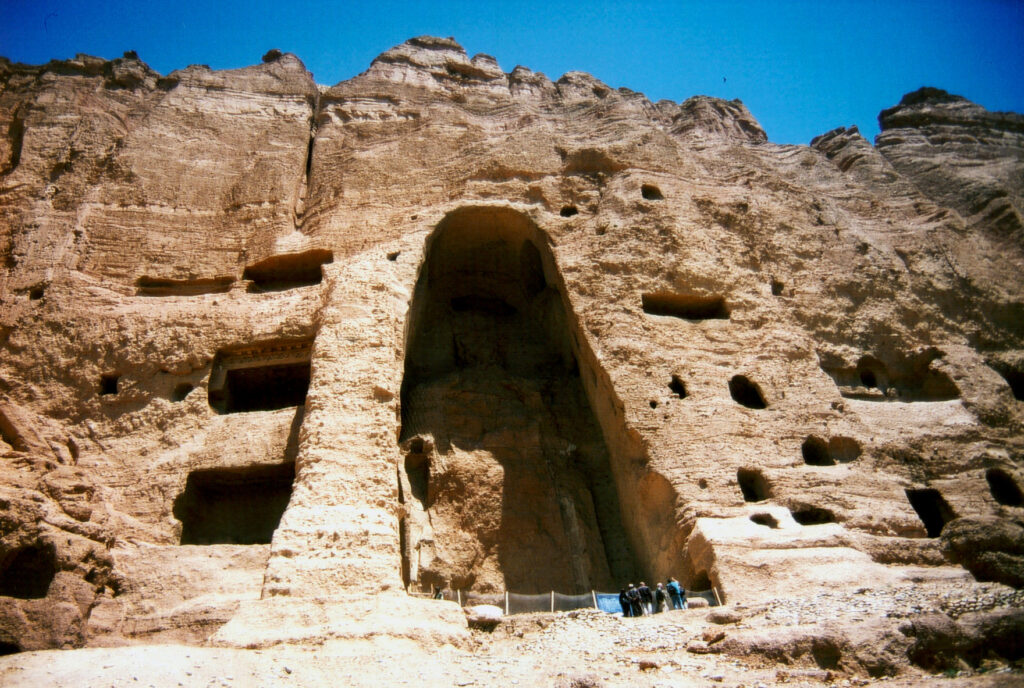
Old City of Kabul
The Old City of Kabul, particularly the Murad Khani quarter, offers a rare glimpse into Afghanistan’s architectural heritage before decades of war and modernization. Narrow lanes, timber-framed houses, and carved wooden balconies reflect centuries-old building traditions. Much of the area had fallen into disrepair, but restoration efforts led by local initiatives—notably the Turquoise Mountain Foundation—have helped preserve and rebuild key structures.
Visitors can walk through restored alleys, visit craft workshops, and learn about carpet weaving, wood carving, and calligraphy practiced by Afghan artisans. Though modest in scale, Murad Khani stands as one of the last intact historic quarters in Kabul and a symbol of cultural resilience.
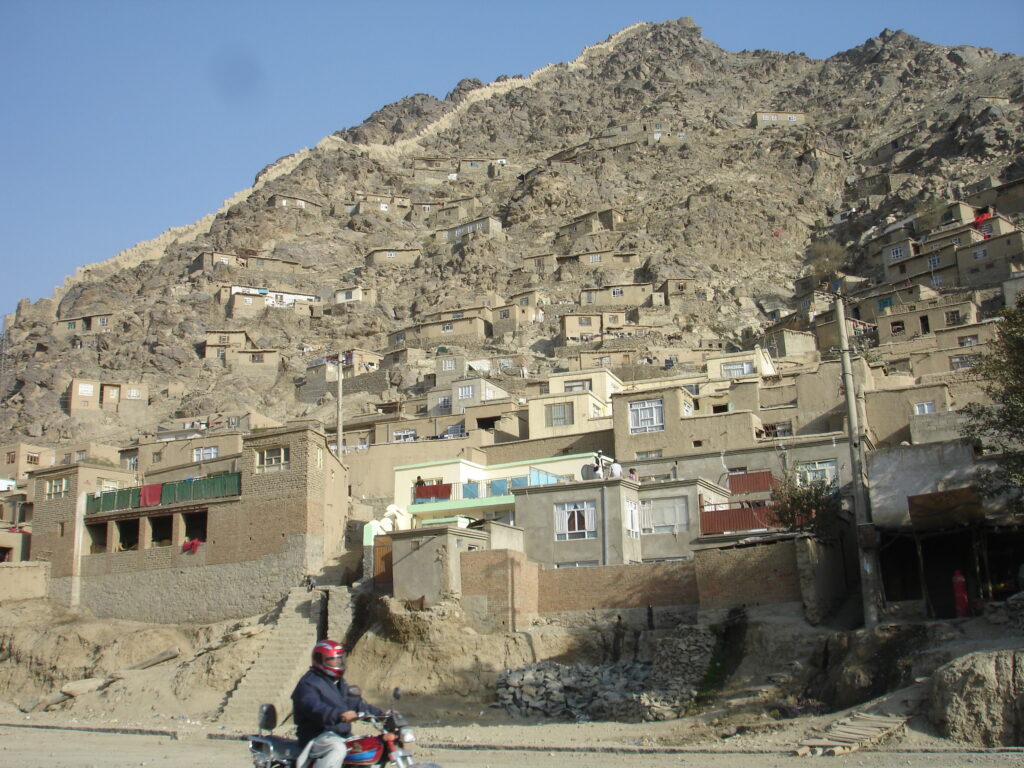
Best Culinary & Market Experiences
Dishes to Try
- Kabuli Pulao – Fragrant rice cooked with lamb, carrots, raisins, and spices. Often garnished with almonds and pistachios.
- Mantu – Steamed dumplings filled with spiced minced meat, topped with yogurt, tomato sauce, and herbs.
- Ashak – Dumplings stuffed with leeks or scallions, usually served with yogurt and minced meat.
- Bolani – A popular street food: flatbread stuffed with potato, spinach, or lentils, and fried until crispy.
Sweets & Snacks
- Jalebi – Deep-fried spirals soaked in syrup.
- Sheer Khurma – A dessert made with milk, vermicelli, and dates, often served during Eid.
- Halwa-e Sohan – A nutty, saffron-infused sweet found in bazaars.
Tea Culture
Afghans drink black or green tea throughout the day, often accompanied by nosh – a spread of nuts, dried fruit, or sweets. Hospitality begins with a pot of tea.
Bazaars to Explore
- Chowk Bazaar (Herat) – A sensory feast of carpets, saffron, textiles, and traditional wares.
- Chicken Street (Kabul) – Though quieter now, this historic shopping street is known for antiques, jewelry, and handicrafts.
Travel Tips for Visiting Afghanistan
Best Time to Visit
- Spring (March–May) – Blossoming trees and pleasant weather make this an ideal time for sightseeing.
- Autumn (September–October) – Golden landscapes and harvest festivals.
- Summer – Cooler in highlands like Bamiyan and the Wakhan Corridor, but hot in cities.
- Winter – Cold and snowy in the mountains, with some road closures.
Visa & Entry
- Tourist visa required, obtained from Afghan embassies or consulates abroad.
- Often requires a letter of invitation from a host or tour company.
Safety
- Security is a major concern. Travel only with trusted local guides.
- Monitor government advisories before planning a trip.
- Avoid travel near active conflict zones or border regions without proper security arrangements.
Cultural Etiquette
- Dress conservatively. Women should wear headscarves and loose clothing.
- Photography of people or infrastructure should only be done with permission.
- Always show respect for local customs, religious practices, and hospitality.
Transportation & Driving Tips
Getting Around
- Air travel between cities is common and generally safer than road travel.
- Roads are rough and underdeveloped, especially in rural areas.
- Use local drivers familiar with regional conditions and security checkpoints.
Driving
- Not recommended for foreigners unfamiliar with the terrain and risks.
- If necessary, a 4WD vehicle and International Driving Permit are essential.
- Fuel availability is limited outside major cities.
Afghanistan is a land of beauty and resilience – where deep valleys hold millennia of history, and mountains echo with stories of conquest, trade, and faith. While the country faces undeniable challenges, its cultural and natural heritage remains profoundly moving.

Published July 08, 2025 • 16m to read

